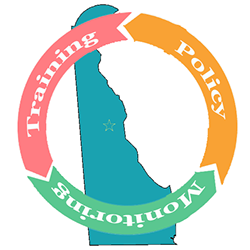Train & Hope??
![]() Training is necessary but often insufficient to ensure adoption of new practices.
Training is necessary but often insufficient to ensure adoption of new practices.
White elephant
![]() Create effective, sustainable programs before sinking money into a new building.
Create effective, sustainable programs before sinking money into a new building.
Implement, baby, implement
![]() Is traditional autism research becoming a bridge to nowhere?
Is traditional autism research becoming a bridge to nowhere?
Research to guide services
AutismSpectrumNewsNot all research is equally relevant to those focused on providing services.
A Network on Excellence
 Can statewide training increase expertise and capacity, and bridge gaps?
Can statewide training increase expertise and capacity, and bridge gaps?
A Bus to Betsy's
 The nominee to lead special education in the US could send it back to the Stone Age.
The nominee to lead special education in the US could send it back to the Stone Age.
The Business of innovation
 New services are shaped not by research but by available funds, staff, and expertise.
New services are shaped not by research but by available funds, staff, and expertise.
Margot votes! Will others?
 Learn how people like Margot exercise their right to vote in the 11 states that allow it .
Learn how people like Margot exercise their right to vote in the 11 states that allow it .
CoVid's silver lining
 Insights into the isolation and costs of disability might finally spur policy changes.
Insights into the isolation and costs of disability might finally spur policy changes.
A State of Synchro
The magic of teaching someone like Margot to ski mobilizes a remarkable army.
A Drop in the Bucket
New data suggests ASD research has little impact on improving identification.
Don't be blinded by the white elephant
Invest in people and programs before investing in buildings
November 2, 2016
Have you ever helped to cut the ribbon celebrating the dedication of a new facility, or turned over a shovelful of soil signifying the beginning of construction? It is always an awkward moment: either you have 5 dignitaries trying to cut the ribbon together using one pair of scissors in an odd variation on Twister, or someone has found an oversize pair of scissors reminiscent of the Cat in the Hat. Somewhere in the middle may be a politician or philanthropist, proud of the project they have brought to life.
Once I got to use a shovel with a gold-plated handle to dig into a pile of dirt carefully poured on a gym floor (a downpour on dedication day threatened to soak the dignitaries on the construction site itself). For the facility that turns out to be a great white elephant, that shovel might prove useful long after the dignitaries have left, cleaning up the mess the white elephant leaves behind.
 As philanthropists and program leaders discuss different kinds of programs that may help to close gaps in implementation, they will inevitably consider whether to invest in new facilities to house these programs. It often seems like a first, simple step to take, but you might want to think again. Don't begin by investing a lot of money into a new building unless you are sure that your program will be effective and sustainable.
As philanthropists and program leaders discuss different kinds of programs that may help to close gaps in implementation, they will inevitably consider whether to invest in new facilities to house these programs. It often seems like a first, simple step to take, but you might want to think again. Don't begin by investing a lot of money into a new building unless you are sure that your program will be effective and sustainable.
White elephants are common among programs intended to serve people with disabilities. In these projects, the tremendous energy, enthusiasm, and money invested into a new facility dwarfs the planning that goes into the program itself. A gleaming building begins to take rise before the foundation of the program itself has been established. Who will the program help? What kind of help will be offered? Meetings after meetings held to debate colors, design, and layout of the building, without first verifying that an effective and affordable program can be offered. If the building takes a long time to design and build, or is over budget, or it does not live up to expectations, the appetite for the more significant, more complicated, and the ultimately more important long-term investment in staff and training will wane.
To be sure, sometimes the physical facility can have an impact on the program. I designed and launched an in-patient treatment program for adolescents in severe behavioral crisis: many patients upon admission were simply too dangerous to safely leave the small building housing the unit, and once they could safely leave the building the insurers concluded that they were ready for discharge. A poorly designed building would have made it harder for us to prevent or respond to a crisis that could leave patients and staff at risk of serious injury.
And there are some universal design considerations when building for people on the spectrum, some of which have an immediate impact on cost. In a recent building proposal, I recommended a design that included different kinds of “safe spaces” for the young adults on the spectrum who would live and work there: single bedrooms instead of the doubles typical of freshman dorms; one bathroom per two residents; extra wide hallways and generous classrooms for those uncomfortable with the noise and proximity of others. Some of these considerations preclude an easy retrofit, and each additional square foot adds to the overall project cost.
Unless a building is very poorly designed, however, decisions about the kinds of program to be offered, who (and how many) it would serve, and overall cost and accessibility will always be much more important in the long-term. In the cases described above, I had also developed detailed program descriptions that included schedules listing the the kinds of spaces needed hour by hour, the number of participants, and the best configuration given the activities scheduled.
Sometimes, the gap between the relative investment in facilities versus programming is stark. For a while, it seemed like every new facility had to include a sensory or Snoezelen room. When touring a new facility, who wouldn’t be impressed by a Snoezelen room with cool lighting, sound dampening materials, swings, and other gadgets. Who wouldn’t believe that all this could calm someone in a behavioral crisis. But I found that the investment in a Snoezelen room can be inversely related to the emphasis on programs that are actually evidence-based - that is, those grounded in positive and proactive behavioral strategies derived from functional behavioral assessment.
The impact of a poor decision can continue to increase long after the ribbon is cut. Designing a program that will continue to grow and thrive over time takes dedication and planning, and the cumulative cost of the services delivered will invariably exceed that of the facility within a couple of years. I was recently involved in college-based transition proposal targeting low-income youth, and that hoped to include a residential component in a dedicated building. I could design the program to eliminate a tuition charge to three quarters of the students, but bringing the residential fee ($25 000/year for a typical student) within reach of our targeted population seemed insurmountable. Failure here would create a blindingly white element: a dedicated facility ostensibly serving low income youth, conveniently located in one of the most impoverished neighborhoods of the region, but priced beyond the reach of all but the wealthiest families.
The decisions about facilities and programs are further complicated by philanthropy. A donor can imagine a building going up, but cannot “see” a program. The president of a university who may have little experience in day-to-day programming faces the same dilemma, and needs to decide quickly on a strategy to engage a potential donor or risk losing a tremendous gift. Donors who built their own fortune are used to getting things done: a building that completed in 12-18 months is much more attractive than a new program that may take three years to hit its stride. A picture of a ribbon cutting combined with the aspirations of a proposed program guarantees coverage: no need to demonstrate actual outcomes (yet).
What are some solutions? In the Transition Pathways Proposal, I helped to craft a two-stage proposal, funding the start-up of the program first, and then developing a proposal for a dedicated facility. We structured the proposal to help the donor to visualize the outcomes of the program as easily as they might see a building design. I also made sure to include very specific commitments about the number and type of people who would benefit, and a sample “case history” to illustrate how.
In the end, even a poorly designed program can look enticing with the right marketing materials; you can hang a lot of trinkets on a big white elephant. Maybe we need to invest more energy in choosing the right mule likely to go the distance and actually deliver the goods; the programs and the staff that actually deliver outcomes, not the bricks and mortar that house them. Plus, a mule leaves less of a mess.... and a white elephant can live for many many years.

Train & Hope??
![]() Training is necessary but often insufficient to ensure adoption of new practices.
Training is necessary but often insufficient to ensure adoption of new practices.
White elephant
![]() Create effective, sustainable programs before sinking money into a new building.
Create effective, sustainable programs before sinking money into a new building.
Implement, baby, implement
![]() Is traditional autism research becoming a bridge to nowhere?
Is traditional autism research becoming a bridge to nowhere?
Research to guide services
AutismSpectrumNewsNot all research is equally relevant to those focused on providing services.
A Network on Excellence
 Can statewide training increase expertise and capacity, and bridge gaps?
Can statewide training increase expertise and capacity, and bridge gaps?
A Bus to Betsy's
 The nominee to lead special education in the US could send it back to the Stone Age.
The nominee to lead special education in the US could send it back to the Stone Age.
The Business of innovation
 New services are shaped not by research but by available funds, staff, and expertise.
New services are shaped not by research but by available funds, staff, and expertise.
Margot votes! Will others?
 Learn how people like Margot exercise their right to vote in the 11 states that allow it .
Learn how people like Margot exercise their right to vote in the 11 states that allow it .
CoVid's silver lining
 Insights into the isolation and costs of disability might finally spur policy changes.
Insights into the isolation and costs of disability might finally spur policy changes.
A State of Synchro
The magic of teaching someone like Margot to ski mobilizes a remarkable army.
A Drop in the Bucket
New data suggests ASD research has little impact on improving identification.